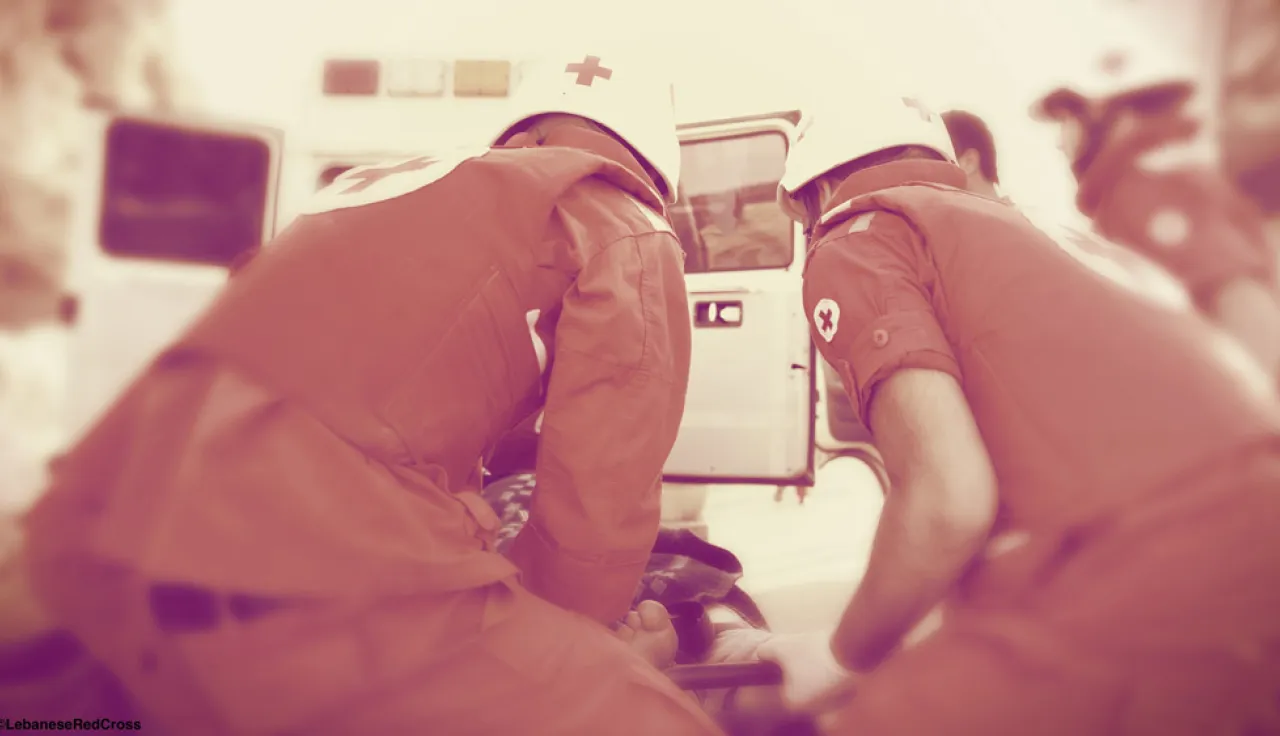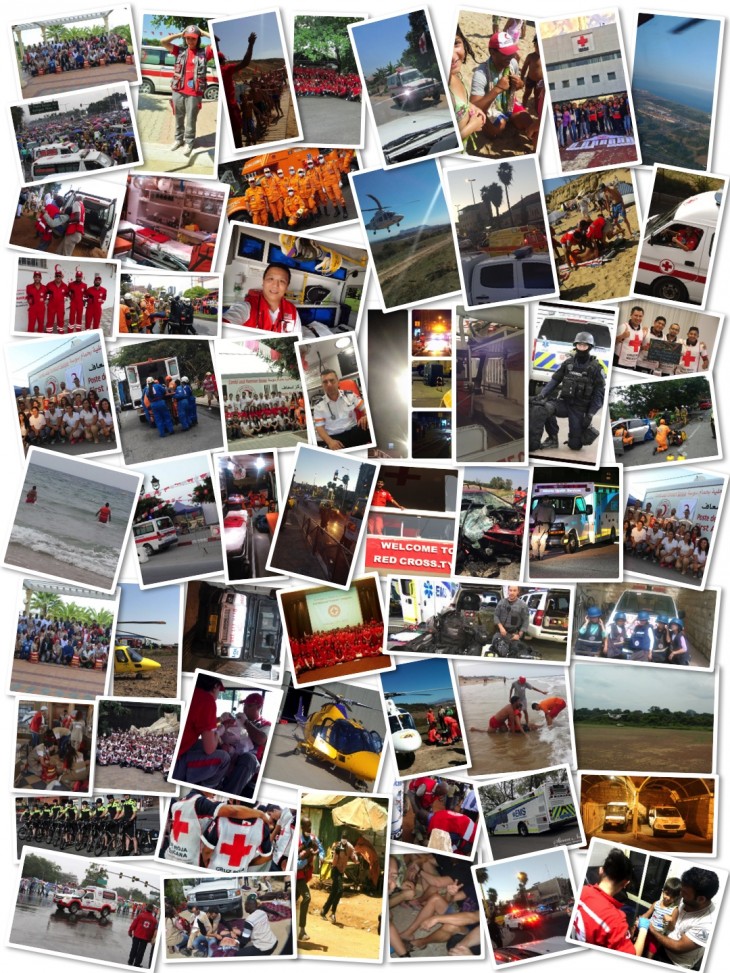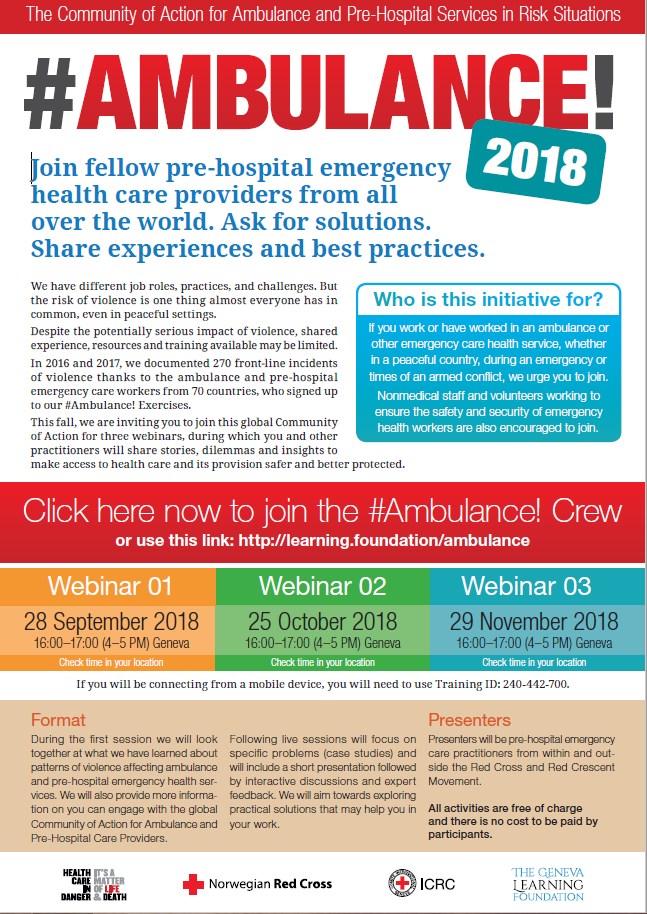Community of Action: Sharing good practices in safeguarding medical vehicles

Emergency medical vehicles under attack
While attacks on health-care facilities in different conflict zones are widely reported in the media, attacks on ambulances and other pre-hospital emergency vehicles – and the disruption to these life-saving services – receive less coverage. Between January 2012 and December 2014, the International Committee of the Red Cross (ICRC) recorded 2,398 incidents of violence against health-care services in 11 countries; 543 of these incidents involved medical vehicles being attacked while going to or from health-care facilities, while held up at checkpoints or in public places. However, these figures do not represent the true magnitude of the problem, as such incidents remain under-reported, especially cases of obstructing and attacking ambulances.
That is why improving the security of ambulance and pre-hospital services has been one of the main pillars of the Health Care in Danger (HCID) initiative. Experts took part in a workshop on this specific topic in 2013 in Mexico, which led to the development of a set of recommendations. Taking the lead, the Norwegian Red Cross then worked with 12 other National Red Cross and Red Crescent Societies from the Americas, the Middle East and North Africa to produce Best Practice for Ambulance Services in Risk Situations. These practices reflect operational procedures and practices from National Societies with extensive experience in operating ambulance services in armed conflict and high-risk situations.
Countering violence with a community of action
The Norwegian Red Cross has been working on various HCID projects for several years now. Although the National Society does not provide ambulance services, it got involved because there was no global network specifically for improving the security of ambulance and pre-hospital services in high-risk situations, and to improve implementation of HCID recommendations in this area.
In May 2016, the Norwegian Red Cross invited representatives from 17 organizations that provided ambulance services* to discuss ways for their staff and volunteers to benefit from sharing experiences and knowledge. This meeting resulted in the establishment of the Community of Action (CoA) for Ambulance and Pre-Hospital Emergency Care Providers in Risk Situations. "The objective of this not-for-profit community of knowledge is to reduce the barriers to accessing effective health care, by improving the security of medical transport," says Frederik Siem, former senior adviser on HCID at the Norwegian Red Cross. "We believe that health-care providers are not passive victims of threats and attacks but active agents in bolstering their own security.

Participants in the 2016 and 2017 #Ambulance! exercises
An international exchange of knowledge and experience
The CoA aims be a global forum for practitioners in both conflict and non-conflict settings to share experiences, good practices and advice. It seeks to complement the HCID initiative with more practical measures, strengthen partnerships (including with the private sector and academic or research institutions), enhance understanding of the violence affecting medical transport services and reinforce humanitarian diplomacy and communication on the issue. So far, 1,500 people have benefited from the activities organized through the CoA.
Three medical practitioners, Dr Cristina Guerrero from Spain, Dr Hanna Kaade from Syria** and Michael Bradfield from the UK, have been particularly active in supporting various CoA initiatives and their fellow colleagues (you can read about their fascinating work in the next newsletter).
Building on the recommendations and previous exchanges, the CoA organized the #Ambulance! online exercises in 2017. This initiative allowed over 500 practitioners to share their experiences of violence in their work and/or the measures they implemented in response. "Right now, the community is undergoing a 'revival' stage, where we focus on the practical measures drawn from the case studies," says Lars Erik Svanberg, senior adviser on HCID at the Norwegian Red Cross. "We encourage members to exchange stories, cases and practices and to apply the knowledge gained to improve responses and mitigate violence against medical vehicles in risk situations." To facilitate this, the CoA organized a series of webinars during the fall of 2018.
There are many ways to contribute to the CoA's initiatives. If you are or have worked as ambulance staff or within pre-hospital health services, whether in times of peace or armed conflict or in emergency situations, we invite you to join the CoA and learn more about the webinars here. Check in with the CoA early next year to learn about its exciting new initiatives for 2019. To receive more information and connect with fellow practitioners, please request access to the HCID online community, which hosts a group specifically dedicated to the CoA.
By taking part in the CoA, you will have the chance to:
1. share dilemmas linked to any violence you have faced in your work and explore how to solve them with peers from all over the world
2. broaden your understanding of pre-hospital emergency care beyond your local context
3. improve your awareness of risks in your own country and setting.
"The idea is to make the initiative self-driven and sustainable and to involve more actors in its operationalization," says Svanberg. "Despite differences between countries, there is a strong collegial feeling and sense of belonging to the cause within the community, so the mission is the same for everyone. There is a great willingness to share, and there are no other similar platforms for sharing and learning."
Notes:
* Movement: Colombian Red Cross, Egyptian Red Crescent Society, Honduran Red Cross, Kenya Red Cross Society, Magen David Adom in Israel, Mexican Red Cross, Norwegian Red Cross, Palestine Red Crescent Society, Salvadorean Red Cross Society, Somali Red Crescent Society, Spanish Red Cross, the International Federation of Red Cross and Red Crescent Societies, and the ICRC. Outside the Movement: Aman Foundation (Pakistan), Egyptian Ambulance Association, Emergency Medical Service Chiefs (USA) and Falck (Denmark).
** Based in Germany.
Health Care in Danger is an initiative of the International Red Cross and Red Crescent Movement to make access to, and delivery of, health care safer in armed conflict or other emergencies. This initiative calls for the respect and protection of health care workers, facilities and vehicles and the implementation of a series of recommendations and practical measures to safeguard health care services and their humanitarian mission. This initiative is supported by a number of partners, individuals and organisations, members of the Health Care in Danger Community of Concern.
For more information:
- Visit the Health Care in Danger website
- Join our online community
- Follow @HCIDproject on Twitter and join our call to #protecthealthcare
- Sign up to our newsletter and stay informed




